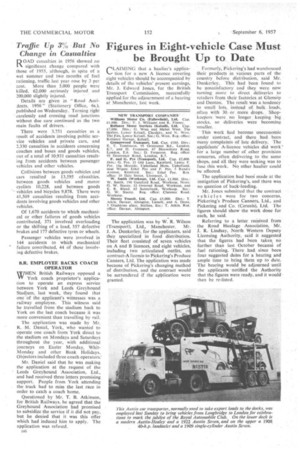Traffic Up 3% But No Change in Casualties
Page 52

If you've noticed an error in this article please click here to report it so we can fix it.
D OAD casualties in 1956 showed no
significant change compared with those of 1955, although, in spite of a wet summer and two months of fuel rationing, traffic last year rose by 3 per ;tent. More than 5,000 people were killed, 62,000 .seriously injured and 200,000 slightly injured.
Details are given in " Road Accidents, 1956" (Stationery Office, 6s.), published on Wednesday.. Turning right carelessly and crossing road junctions without due care continued as the two main faults of drivers.
There were 3,751 casualties as a result of accidents involving public service vehicles and private cars, and 2,330 casualties in accidents concerning coaches and buses and goods vehicles, out of a total of 10,931 casualties resulting from accidents between passenger vehicles and other vehicles.
Collisions between goods vehicles and cars resulted in 13,595 cdsualties, between goods vehicles and motor cyclists 10,228, and between goods vehicles and bicycles 9,878. There were 41,509 casualties .resulting from accidents involving goods vehicles and other vehicles.
Of 1,670 accidents to which mechanical or other failures of goods vehicles contributed, 371 involved overloading or the shifting of a load, 357 defective brakes and 177 defective tyres or wheels.
Passenger vehicles were involved in 144 accidents to which mechanical failure contributed, 44 of these involving defective brakes.




























































































































